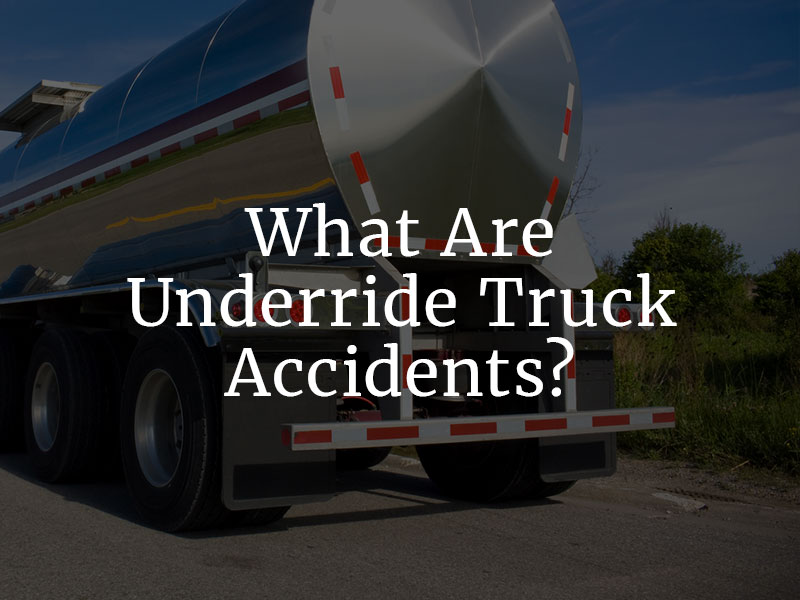What Are Underride Truck Accidents?
Trucking accidents have higher odds of being fatal than typical motor vehicle collisions. In 2017, 4,889 fatal collisions in the U.S. involved large trucks and buses. Large commercial trucks pose serious threats to other motorists. They can weigh 80,000 pounds or more, take longer to stop, make wider turns and have enormous blind spots. One of the risks involved with large trucks is that of an underride accident. Underride accidents can easily be fatal for passenger vehicle occupants.

The Components of an Underride Accident
The police will classify a trucking accident as an underride collision if a passenger vehicle ends up beneath the trailer of a truck. A motor vehicle under the trailer of an 18-wheeler could kill the occupants of the smaller vehicle. The trailer may decapitate passengers, sever their spinal cords or cause severe injuries to their heads, necks or brains. Most underride accidents involve one or multiple fatalities.
Many people confuse underride and override accidents, but they are two different types of trucking collisions. In an underride accident, the passenger vehicle goes beneath the truck. In an override accident, the truck rides over the passenger vehicle. If a large truck rear-ends a smaller car, the tires of the truck could roll up and over the back of the car. Override accidents can also be fatal or catastrophic to passenger vehicle occupants.
Two Types of Underride Truck Accidents
Underride truck accidents occur most often because of human error. A trucking company’s negligent fleet maintenance, for example, could lead to a truck without an adequate rear impact guard or broken taillights. These lapses could ultimately contribute to a passenger vehicle colliding with the back of a truck and causing an underride accident. An underride truck accident could occur in two different ways.
- Rear underride. Striking the rear of a trailer in a motor vehicle could lead to the latter wedging beneath the trailer. A rear underride accident could happen if the passenger vehicle driver was following too closely, speeding or not paying attention to the road. A truck that is missing its rear lights or reflectors could also cause this type of collision.
- Side underride. A side underride accident is a collision with the side of a tractor-trailer when the smaller vehicle ends up beneath the truck. A driver might collide with the side of a semi if he or she is driving drunk, drowsy or distracted. Side underride accidents could also occur in dim lighting – especially if the truck is missing its reflective side strips. A white trailer in bright sunlight can also be difficult for a driver to see.
California is a fault-based insurance state. The driver, company or entity that caused the underride accident will be financially responsible for victims’ losses. Identifying the party at fault for the underride truck accident is an initial step toward obtaining compensation. A truck accident attorney could help analyze an underride accident and identify fault. A trucking company could be liable if it breached federal truck regulations.
Preventing Underride Accidents
The federal government has rules in place to try to prevent deadly underride accidents. One is the rear impact guard requirement. This statute requires rear impact guards on all trailers and semitrailers that exceed 10,000 pounds. These guards can help close the gap between the bottom of the trailer and the ground, reducing the risk of a passenger vehicle sliding beneath the trailer in a collision. No equipment requirements are in place, however, to reduce the risk of side underride accidents.
Passenger vehicle drivers can prevent underride truck accidents by keeping ample distance from tractor-trailers. Staying out of a trucker’s blind spots takes driving at least 30 feet from the rear of a truck, 20 feet from the front, one lane to the left and two lanes to the right. Adequate following distance and safe speeds can allow a driver enough time to brake before colliding with the back or side of a commercial truck. It is also important for truck companies to maintain their fleets and obey all safety equipment requirements to prevent accidents.

